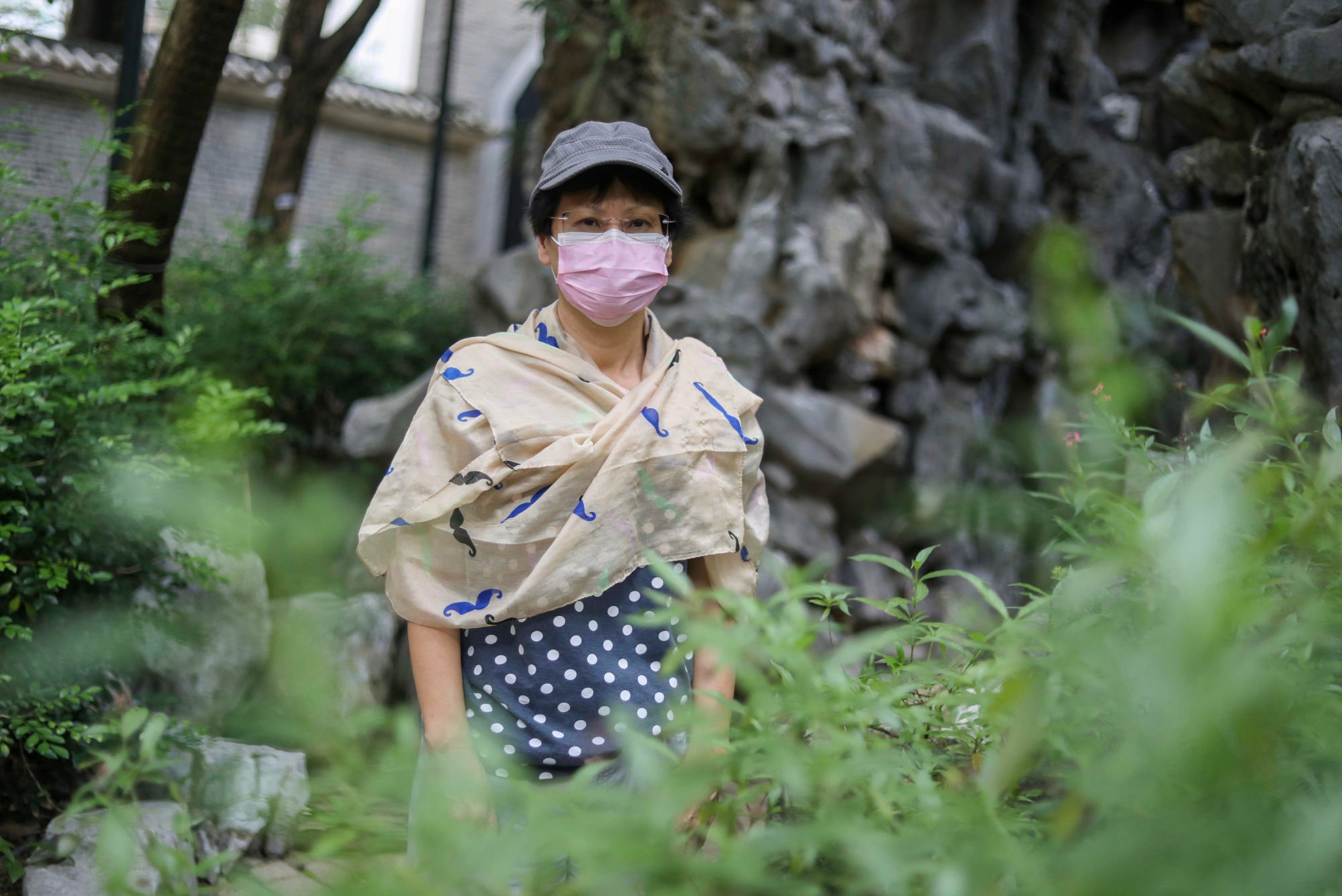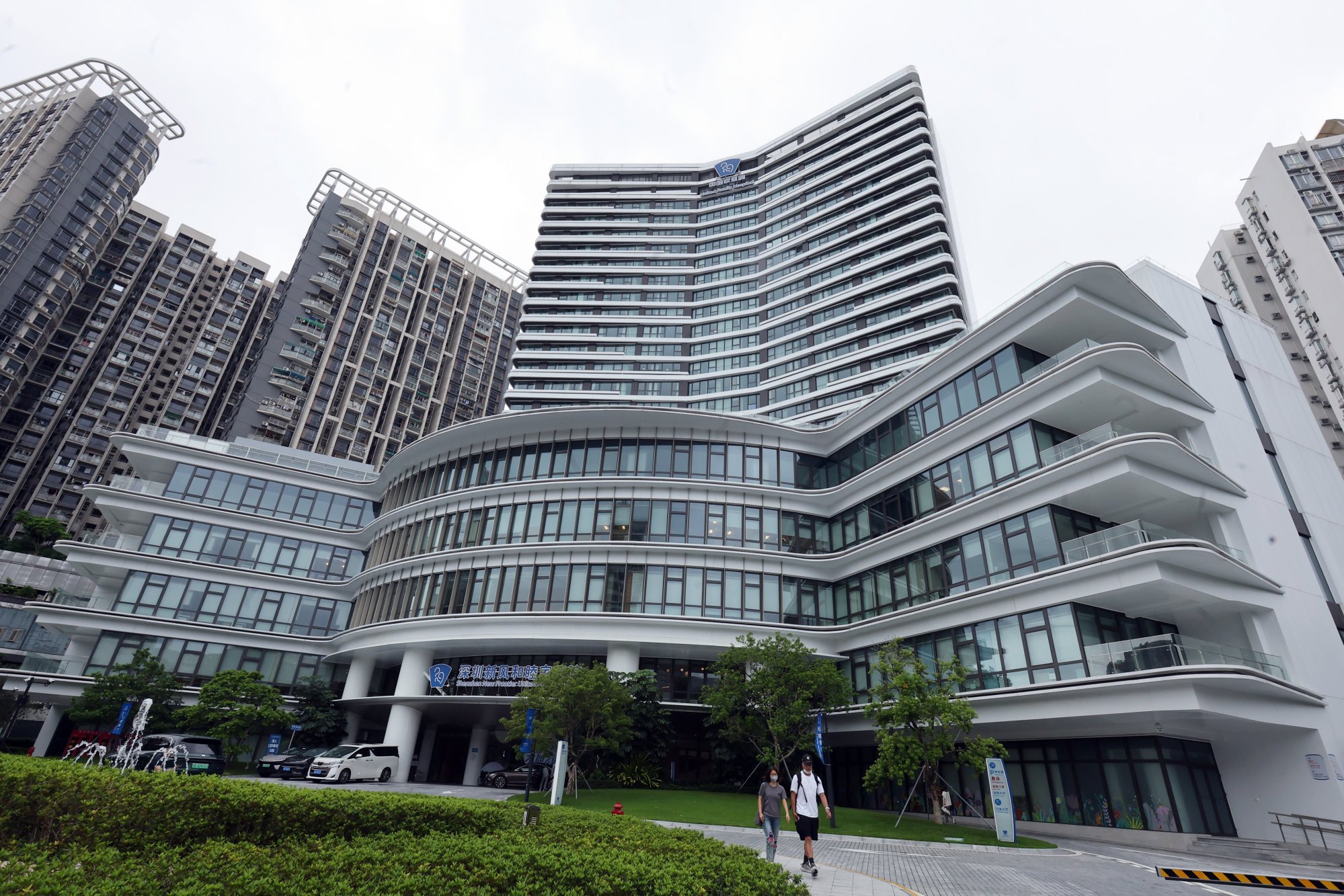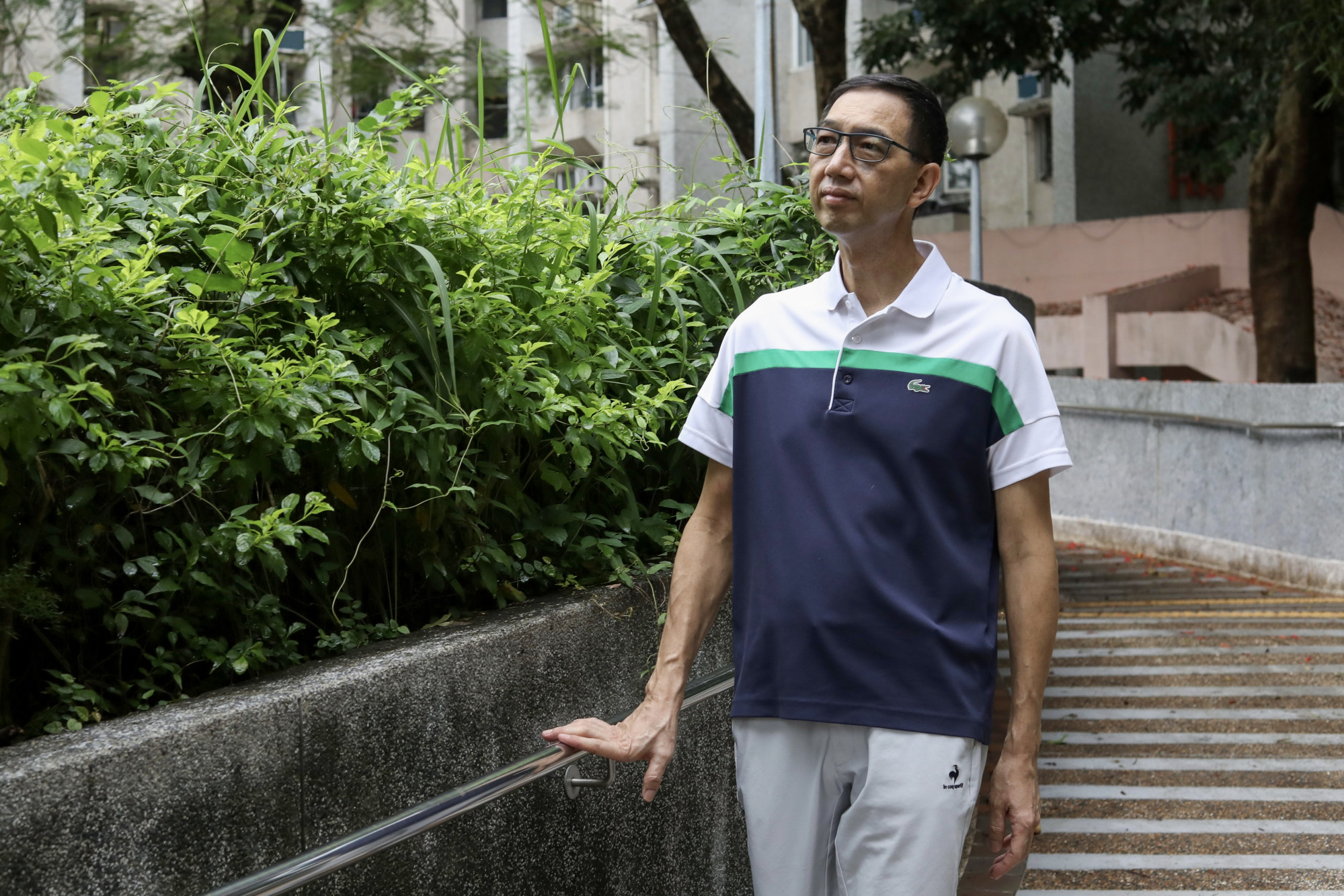Hong Kong retiree Donika Liu leaves her home in Tsuen Wan at 8am and starts a 90-minute train journey across the border to Shenzhen.
At the University of Hong Kong–Shenzhen Hospital in Futian, she sees a doctor and collects a month’s supply of a targeted therapy drug for her cancer.
She is done by noon, and then begins her journey home.
“I make these long, arduous trips across the border to get life-saving medication I cannot afford in Hong Kong,” 59-year-old Liu said.
Single and living alone, she quit her job in social services after she was diagnosed with lung cancer more than two years ago.
Then the cancer spread to her brain. She was told she needed a targeted drug which would cost more than HK$30,000 (US$3,800) a month in Hong Kong.
Unable to afford it, she went to mainland China, where the same medicine cost about 5,000 yuan (US$687) a month, less than a fifth of that in Hong Kong.
She said she had been making her monthly trips across the border since last September.
Liu is among thousands of Hong Kong residents seeking medical care on the mainland, where waiting times are shorter and consultations and medicines cost much less.
The trend has picked up since the reopening of the border last year after the Covid-19 pandemic, and includes not only low-income residents and the elderly, but more well-off Hong Kong residents too.
Experts said the trend was largely market-driven, but also reflected the state of Hong Kong’s overwhelmed public medical system, with its notoriously long waiting times, while private care was beyond the reach of most people.
They called for more support to those seeking medical services in the Greater Bay Area, which connects Hong Kong, Macau and nine cities in Guangdong province.
“It is an irreversible trend, driven by the integration of the Greater Bay Area and the improving medical services across the border,” said Dr Lam Ching-choi, a member of the city’s key decision-making Executive Council.
“The trend has created new opportunities for cooperation between Hong Kong and the mainland in medical care, and has also prompted us to consider how we can solve our own problems.”

Agony of waiting for an appointment
Hong Kong’s rapidly ageing population has put increasing pressure on the public medical system. Hospital Authority data also shows that waiting times can even stretch into years.
A comparison of median waiting times across specialist outpatient clinics showed that a “stable case” eye patient booking a first appointment must wait between 42 and 85 weeks, as of the end of March. The longest wait of 180 weeks was recorded in Kowloon West.
Those considered urgent or semi-urgent cases had to wait less.
The median waiting time for ear, nose and throat appointments ranged between 14 and 70 weeks across clinics, and for orthopaedic and trauma cases, between 20 and 59 weeks.
Security guard Tan Chun, 70, went to a public hospital in February for chronic back pain caused by the narrowing of her spinal canal. She was told to wait three months for her next consultation, in May.
In March, the pain in her lower back was so severe that she could barely walk. She tried massage and acupuncture, but stopped when she could not afford to pay HK$500 to HK$600 each time.
A mainlander married to a Hongkonger, she made a five-hour journey by high-speed train to her hometown, Guangxi, for treatment at hospitals there.
She said she was attended to immediately and over several weeks, received treatment including drug infusions, massage, acupuncture and traditional Chinese medicine.
“The waiting time in Hong Kong’s public hospitals is just too long to bear the pain,” she said.

Tours offer sightseeing and a check-up
Linda Tsang Chi-man, executive director of the Hong Kong Federation of Trade Unions Greater Bay Area Social Services, said the number heading to the mainland, especially elderly people, had started surging from the second half of last year.
Many sought dental and eye care and physical check-ups in Shenzhen and Zhuhai, near the border.
Some were attracted by the mainland institutions’ increased advertising in Hong Kong, while others were encouraged by good feedback from friends or relatives about the quality, care and cost.
Tsang’s organisation decided to start guided tours taking elderly Hongkongers for health screenings and sightseeing across the border.
Patients’ rights advocate Tim Pang Hung-cheong, of the Society for Community Organisation, said that before the pandemic, most of those going across the border for medical services were low-income residents and new arrivals from the mainland.
Now, more middle-class patients are going too, including cancer patients who paid only a quarter to a third of Hong Kong prices for treatments such as chemotherapy, radiotherapy and targeted therapy drugs.
Most chose hospitals in Shenzhen, although some travelled further to Zhuhai, Zhongshan or Huizhou, also in Guangdong.
Pang said he expected the number to keep growing.
More mainland hospitals attract patients
The University of Hong Kong–Shenzhen Hospital, which opened in 2012, is a top choice for many Hongkongers because it bears the brand of the city’s top university.
Until this year, the public hospital and its community health centre were the only mainland institutions where eligible elderly Hongkongers could use a healthcare voucher.
Since 2009, eligible residents aged 65 and above have received an annual voucher of HK$2,000 per person, with the amount allowed to accumulate up to HK$8,000.
The value of vouchers used at the hospital tripled from about HK$4 million in 2019 to about HK$11.9 million last year, according to official data. In the first half of this year, vouchers worth about HK$9.2 million were used.
In February, the Hong Kong government announced that the vouchers could also be used at seven more medical institutions in mainland cities in the bay area this year. Five offer integrated medical services and two provide dental care.
Other medical institutions on the mainland, including those targeting better-off patients, have also gained increasing popularity.
Retired construction foreman Kwong Yuk-lam, 72, said he and his wife accompanied their accountant daughter to the Shenzhen New Frontier United Family Hospital in Futian to remove her uterine fibroids.
Everything was done in just three days, he said.

His daughter, in her 40s, checked in on May 30 and had a check-up before undergoing the procedure the next day. She was discharged the day after that.
“The environment was good and more importantly, the arrangement of the services was fast,” Kwong said.
The total cost? About 40,000 yuan.
Kwong said if his daughter had chosen to be treated in Hong Kong, she would have had to wait half a year for a follow-up visit at a public hospital. Going to a private clinic would have cost about HK$130,000 – three times more than she paid in Shenzhen.
Brian Siu Ngai-fong, executive director of New Frontier, which runs the private hospital in Shenzhen, said that until last August, it saw only about 20 Hong Kong patients a month.
Anticipating the arrival of more Hong Kong patients after the pandemic, the hospital increased its advertising on social media and in patients’ groups last summer.
“The number of Hong Kong patients started growing last September and the momentum has stayed,” he said.
Targeting middle- and high-income patients, it now has about 1,000 patients a month from Hong Kong, accounting for a fifth of its total.
Many were elderly, and the most sought-after services included health screenings, dental cleaning and gastroscopy.
Physical check-ups cost between about 3,000 yuan and 8,000 yuan, and a gastroscopy cost between 7,000 yuan and 8,000 yuan, both roughly half the price in Hong Kong.
The hospital now runs a regular shuttle bus service from the Futian border, and has trained its medical staff to speak Cantonese and set up a dedicated hotline for Hong Kong and Macau patients.
Siu said the hospital would open a new rehabilitation centre in Hong Kong this year, so patients returning from Shenzhen could receive follow-up services.

‘Heading north is the only way out’
Hongkonger Golan Kwok Che-lun started a volunteer service last year to accompany cancer patients to the University of Hong Kong–Shenzhen Hospital.
The former IT professional, now 60 and retired, was diagnosed with lung cancer three years ago while working in Shanghai. That was when he realised how much less targeted therapy drugs cost there.
For example, he said, a particular hormone therapy drug for prostate cancer costs about HK$35,000 a month at Hong Kong’s public hospitals but only 500 yuan on the mainland – less than 2 per cent of the price in Hong Kong.
“For many, heading north is not an alternative but their only way out,” he said.
Kwok and his team of six volunteers, all current or recovered cancer patients, have helped more than 100 patients so far. Some had impaired mobility or were unfamiliar with procedures on the mainland.
The team now makes a weekly trip, taking three to eight patients across the border. Although the process was mostly smooth-going, the long trip could be agonising for some elderly patients.
Sometimes, when their digital medical records were not accessible across the border, they ended up having to repeat tests there.
Kwok hoped to train more volunteers to meet growing demand.
Tsang Kin-ping, chairman of patient group Rare Disease Hong Kong said those seeking cheaper treatment on the mainland included people with rare diseases.
About eight patients with spinal muscular atrophy – a degenerative genetic condition that weakens the muscles progressively, causing mobility problems – began making regular trips to the University of Hong Kong–Shenzhen Hospital last year.
Tsang said each of them needed medicines that cost more than HK$2 million a year in Hong Kong without government subsidies. In Shenzhen, it cost 95 per cent less, 100,000 yuan a year, he added.
Kwok and Tsang urged Hong Kong authorities to do more to bring down the price of the drugs in the city.

Others said Hong Kong patients also faced difficulties accessing their digital medical records when on the mainland, and some did not know how to handle medical disputes there.
Some suggested expanding the healthcare voucher scheme further to include more Grade 3A hospitals, the top tier of hospitals on the mainland, in Guangdong cities.
It would also help if the government subsidised patients to buy the mainland’s medical insurance to cover inpatient service expenses, they said.
‘Work with mainland to cut drug prices’
Lawmaker David Lam Tzit-yuen, who represents the medical and health services sector, said that when it came to drug prices, the mainland had strong bargaining power with pharmaceutical companies.
He suggested that the Hong Kong authorities work with the central government to buy costly drugs for rare diseases and cancers to bring down the prices in the city.
He said the authorities had acted to cut the long waiting time at the city’s public hospitals.
Community screening for earlier detection of chronic conditions had helped reduce the number of serious cases, while stable cases were moved to the primary healthcare system.
“We need to increase the manpower on the one hand, and also reduce the number of patients with serious diseases on the other, as well as hand some stable cases over to the community,” he said.
The government had set a series of targets to cut waiting times, including reducing the wait for stable new case bookings for the specialty of internal medicine by 20 per cent in 2023-24. That meant going from 122 weeks to 97 weeks.
According to the Hospital Authority’s report on last year’s performance, the target had been reached, with the waiting time down to 92 weeks.
The authorities were also working to meet new targets to trim the waiting time for stable new case bookings for ear, nose and throat, and orthopaedics and trauma patients.
Exco member Lam Ching-choi said the trend of Hongkongers heading north reflected the city’s polarised medical system which left many sandwiched between affordable public care and high-priced private care.
He said cooperation between the city and the mainland could offer a solution, with patients doing low-risk tests on the mainland at a lower cost before returning to Hong Kong to consult local doctors.
Further cross-border healthcare integration would see more Hong Kong doctors seeking opportunities in the bay area, and different health conditions could be treated at various places in the region to maximise benefits to patients, he added.
Lau Siu-kai, a consultant for the Chinese Association of Hong Kong and Macau Studies, a semi-official think tank, said the trend of Hongkongers seeking medical care on the mainland could make up for the shortcomings of the city’s medical services and also prompt local doctors to lower prices.
But he cautioned that a continuous influx of patients could cause mainlanders to complain that Hongkongers were swamping their medical resources.
He said it would help if more Hong Kong businesses set up medical facilities across the border, increasing the overall supply of services for both Hongkongers and mainlanders.
He also urged the authorities on both sides to ensure cross-border medical disputes were handled properly and step up education on patient rights.
“This can promote the development of our healthcare industry and is also in line with the broader cross-border healthcare integration,” he said.


